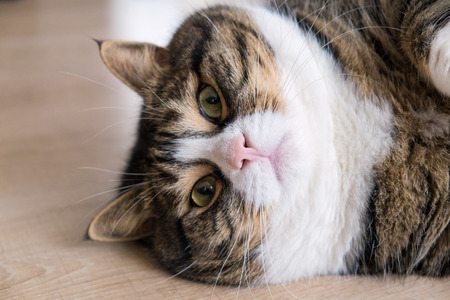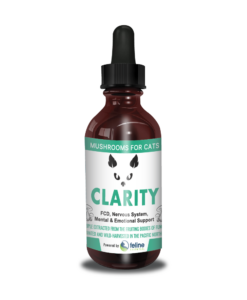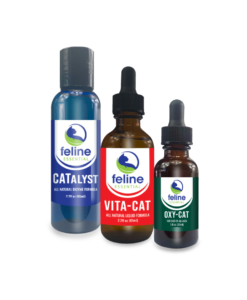The number of diabetic cats in America is increasing at a rapid pace. This is mostly due to dry food diets and lack of exercise. These issues together create a real problem for your cat’s health, and soon you’ll be off to the vet. However, what most traditional veterinarians won’t tell you is that your cat’s diabetes issue can often be resolved with the correct diet and exercise routine.
What To Do With Diabetic Cats
- Make sure that your cat has less than 10% carbohydrates in his diet and practice portion control. Forget about the “prescription diets” that you may have been recommended to purchase. These are not quality foods (none of them!) and will not give your kitty the nutrients his body needs. In many cases these diets will actually make your cat’s condition worse, causing you to spend more and more money on the insulin and medication needs of your diabetic cat. Dry food diets are the main cause of diabetes in cats, so make sure that you make or purchase a species specific raw or wet food diet that is high in protein and low in carbs and fats. The better the quality, the better the outcome. Some cats with diabetes will go into remission and stay there by simply switching the diet.
- Take at least 20 minutes out of your day to play with your cat. Get him moving. Exercise is very important for diabetic cats. Sometimes you will have to get creative if your kitty is a lazy bum. We sometimes chase our big boy around the house just to get him moving. Laser lights (the red dot man) are usually a great hit with cats and you won’t have to do much exercise to make it happen. Certain antioxidant supplements will also help increase energy levels and have been known to help regulate blood sugars at the same time.
- When following the above suggestions, please know that your cat’s needs for insulin will IMMEDIATELY change. Some cats will no longer need insulin at all. It is very important to do In-Home Blood Glucose Monitoring so that you don’t end up harming your kitty by giving too much insulin. DO NOT wait a day or a week to check his insulin needs. This must be done right away. Then adjust accordingly. If you are worried about giving too much, contact your vet with the monitoring results.
The Bottom Line
Finally I need to say this. It’s not your fault. Most of us blame ourselves when we realize that our precious kitties are suffering from some illness. “Why didn’t I see the symptoms sooner?” “What could I have done to stop this?” These are frequent questions that we get from cat parents who call us to discuss their cats’ illnesses.
The truth is, we’ve been deceived by the one industry that we’ve trusted most to keep our cats/pets healthy. The pet food industry owns most of our veterinary clinics across America. We (and our vets) have been told that the foods we feed our cats are nutritious and healthy… and this must be true because the labels say it’s “complete and balanced”. This (intentional and profitable) misinformation is the main reason, in my opinion, that the number of diabetic cats are skyrocketing. So, as a cat parent, don’t beat yourself up. You now have the chance to know more and to do better.
And remember that prevention is always the best medicine.
Support for Diabetic Cats





Recent Comments